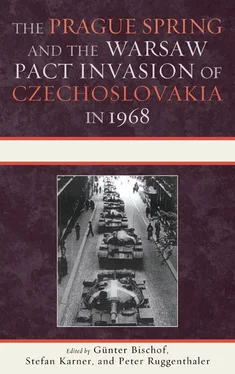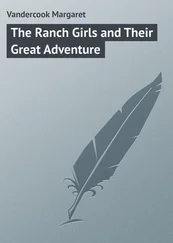16. See essays in Aga Rossi and Quagliarello, L’altra faccia della luna ; Valerio Riva, Oro di Mosca: I finanziamenti sovietici al PCI dalla Rivoluzione d’Ottobre al crollo dell’URSS (Milan: Mondadori, 1999); Gianni Donno, La Gladio Rossa del PCI, 1945–1967 (Soveria Mannelli: Rubbettino, 2001); Pietro di Loreto, Togliatti e la “doppiezza”: Il PCI tra democrazia e insurrezione, 1944–1949 (Bologna: Il Mulino, 1991); Elena Aga Rossi and Victor Zaslavski, Togliatti e Stalin: Il PCI e la politica estera staliniana negli archivi di Mosca (Bologna: Il Mulino, 1997); for balanced accounts on this issue, see Silvio Pons, “L’URSS e il PCI nel sistema della guerra fredda,” in Il PCI nell’Italia repubblicana, 1943–1991 , ed. Roberto Gualtieri (Rome: Carocci, 2001); Marcello Flores, Sul PCI. Un’interpretazione storica (Bologna: Il Mulino, 1992), 68–82.
17. On how the war experience worsened the already poor “state vocation” of the Italians, the best sources are Ernesto Galli della Loggia, L’identità italiana (Bologna: Il Mulino, 1998), 59–84, and Silvio Lanaro, L’Italia nuova: Identità e sviluppo , 1861–1988 (Turin: Einaudi, 1989), 221–27.
18. On how the sense of statehood enhanced the sense of nationhood in France, see especially studies by Pierre Nora, Robert Gildea, Rogers Brubaker, and, most recently, Michael Kelly, The Cultural and Intellectual Rebuilding of France after the Second World War (1944–1947) (New York: Palgrave Macmillan, 2005).
19. On PCI’s lesson from Fascist totalitarianism and meanings of Partito nuovo see also Palmiro Togliatti, Opere, 1944–1955 , vol. 5 (Rome: Ed. Riuniti, 1955), 80–108.
20. Gundle, Between Hollywood and Moscow , 12; Lazar, Maisons rouges , 333–34; cf. Jean-Paul Molinari, Les ouvriers communistes: Sociologie de l’adhésion ouvrière au communisme (Thonon-les-Bains: L’Albaron, 1991); on intellectual influence in both countries, see also the works by Marcello Flores, Nello Ajello, Albertina Vittoria, David Caute, Herbert Lottmann, Dominique Desanti, David Drake, Tony Judt, Pascal Ory, and Jean-François Sirinelli.
21. Research memo by George C. Denney Jr. to acting secretary of state, “SocialistCommunist Collaboration in France: A New ‘Popular Front’?” 6 August 1963, POL 12-1 France, Record Group (RG) 59, National Archives, College Park, MD (NARA); Intervention by Waldeck-Rochet at Mtg. Bureau Politique, in Dec. BP, 2 December 1965, APCF; Stephane Courtois and Marc Lazar, Histoire du Parti communiste français , 2nd ed. (Paris: PUF, 2000), 335. Regarding the contrast following Togliatti’s death in 1964 between the PCI’s right-wing led by Amendola and favoring the cooption of Socialist forces away from the center-left government, and the left wing, led by Pietro Ingrao, which viewed the Socialists as integrated into neocapitalist developments, and favored an anticapitalist coalition involving a possible alliance with Catholic forces, see especially Giorgio Amendola, “Il socialismo in Occidente,” Rinascita , 7 November 1964; Pietro Ingrao, “Un nuovo programma per tutta la sinistra,” Rinascita , 25 December 1965; cf. Grant Amyot, The Italian Communist Party: The Crisis of the Popular Front Strategy (New York: St. Martin’s, 1981), chaps. 3 and 10; Carlo Galluzzi, “I comunisti e il centro-sinistra,” Critica marxista 5 (1972): 93–109.
22. Rinascita , 28 December 1968; see also Luigi Longo, “Il movimento studentesco nella lotta anticapitalistica,” Il Contemporaneo , 3 May 1968; cf. Alexander Höbel, “Il PCI di Longo e il ’68 studentesco,” Studi storici 45, no. 2 (2004): 435–43; Jean-Jacques Becker, Le Parti communiste veut-il prendre le pouvoir? (Paris: Seuil, 1981).
23. Lazar, Maisons rouges , 129.
24. Tony Judt, Postwar: A History of Europe since 1945 (New York: Penguin, 2005), 426; cf. François Fejtö, The French Communist Party and the Crisis of International Communism (Cambridge, MA: MIT, 1967).
25. Palmiro Togliatti, “La via italiana al socialismo,” report to CC of 24 June 1956, in Palmiro Togliatti, Opere , vol. 6; Donald L. M. Blackmer, Unity in Diversity: Italian Communism and the Communist World (Cambridge, MA: MIT, 1968), 125; Velio Spano, “Origini e lineamenti della nostra politica,” Rinascita , January–February 1957; Lazar, Maisons rouges , 90–106; Hélène Carrère d’Encausse, 1956. La déstalinisation commence (Brussels: Complexe, 1984). The best recollections on the intellectual defection among PCI member are the memoirs of Antonio Giolitti, Lettere a Marta: Ricordi e riflessioni (Bologna: Il Mulino, 1992). See also Nello Ajello, Intellettuali e PCI, 1944–1958 (Bari: Laterza, 1979), 401–13.
26. Quoted Courtois and Lazar, Histoire du Parti communiste français , 353. Cf. Dec. BP 27 August 1968, and letter Garaudy to Rochet, 2 September 1968, in Idem, APCF. On scandal, see PCF: Watson to State Dept., 16 May 1970, POL 12 FR, RG 59, NARA. Longo in mtg. Direzione 17 July 1968, mf 020, APCI.
27. Garaudy to Rochet, 2 September 1968, cit.; Courtois and Lazar, Histoire du Parti communiste français , 355; Colombi in Mtg. Direzione, 23 August 1968, mf 020. G. Marini, “La repressione della primavera cecoslovacca: dal ‘grave dissenso’ alla ‘riprovazione,’” in Luigi Longo: La politica e l’azione , ed. Giuseppe Vacca (Rome: Editori Riuniti, 1992), 120; Alexander Höbel, “Il PCI, il ’68 cecoslovacco e il rapporto col PCUS,” Studi Storici 4 (2001): 1149 and 1164–65; see also Alexander Höbel, “Il contrasto tra PCI e PCUS sull’intervento sovietico in Cecoslovacchia: nuove acquisizioni,” Studi Storici 2 (2007): 523–50.
28. Mtg. Direz. 31 October 1968, mf 020, pp. 1085–86, APCI. Berlinguer in VD, 20 June 1969, mf 006, pp. 1722–29, Fondo Berlinguer, fasc. 81, APCI; Carlo Galluzzi, La svolta. Gli anni cruciali del Partito comunista italiano (Milan: Sperling and Kupfer, 1983), 211–14. Höbel, “Il PCI, il ’68 cecoslovacco,” 1168; Lazar, Maisons rouges , 144–47; Lilly Marcou, Le mouvement communiste international depuis 1945 (Paris: PUF, 1980), 81–88.
29. In Mtg. Direzione 18 September 1968, mf 020, p. 939, APCI; see also Report Berlinguer to Political Bureau in Mtg. Direzione 16 November 1968, mf 020, p. 939, APCI. Based on newly released Soviet documents, Victor Zaslavsky has analyzed the postinvasion reaction of the Communist Party of Italy (PCI) on the relationship of the PCI and the Communist Party of the Soviet Union (CPSU) as part of the Boltzmann Institute’s international research project on the Prague Spring. Zaslavsky’s essay is hitherto only published in German. He comes to the conclusion that on the basis of the new perspectives it is necessary to correct our view of the relationship between the Communist Party of Italy and the Communist Party of the Soviet Union after the invasion of Czechoslovakia in 1968. The PCI’s demonstrative protest against the invasion and its search for a “third way” strained its relationship with the CPSU. Italian Communists, like the Soviets, saw Communist identity grounded “in anti-capitalism and in demonizing social democrats.” Still the PCI did not see “the source and the epicenter” of the crisis in Moscow. Even the most liberal of Italian Communists had a hard time criticizing the Soviet view of the sovereignty of states. After all, such a critique would only have supported “deviationist forces on the right” and undermined détente policies. There was also a contradiction here in the recognition of the rights of oppressed peoples. Whereas the PCI and the global communist movement demanded the right of independence for peoples of the “Third World,” even including armed struggle, Zaslavsky contends that they denied the same right to the “victims of Soviet aggression.” See Victor Zaslavsky, “Die italienischen Kommunisten zwischen Widerstand und Resignation,” in Karner et al., Beiträge, 531–47. The author would like to thank the editors for this reference.
Читать дальше












